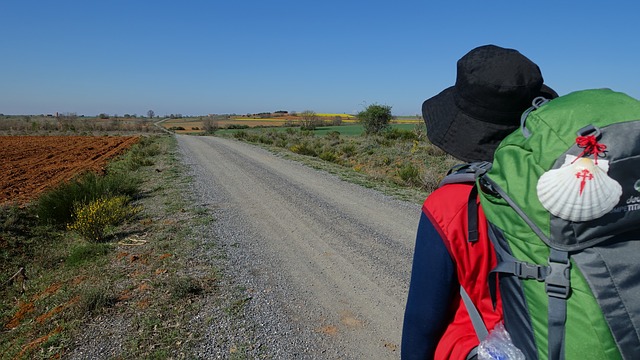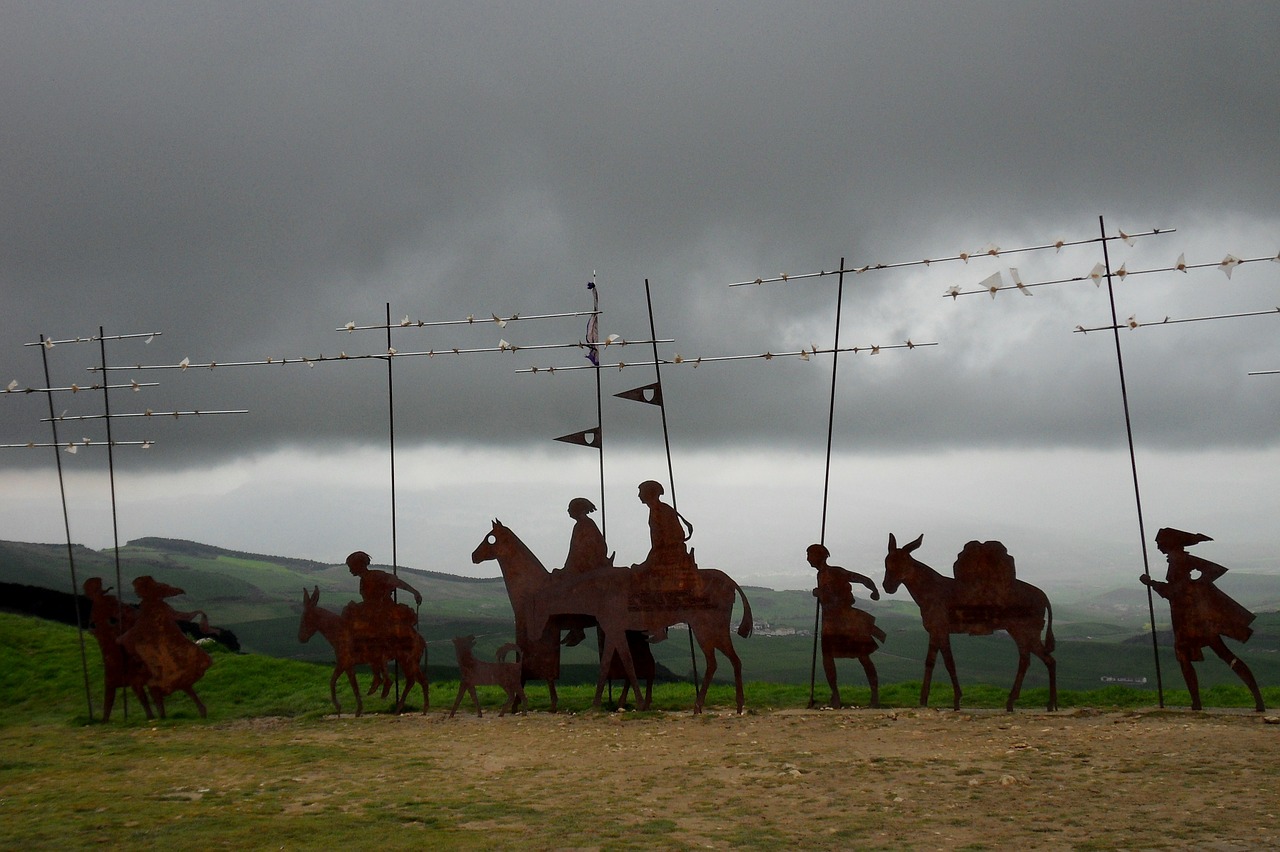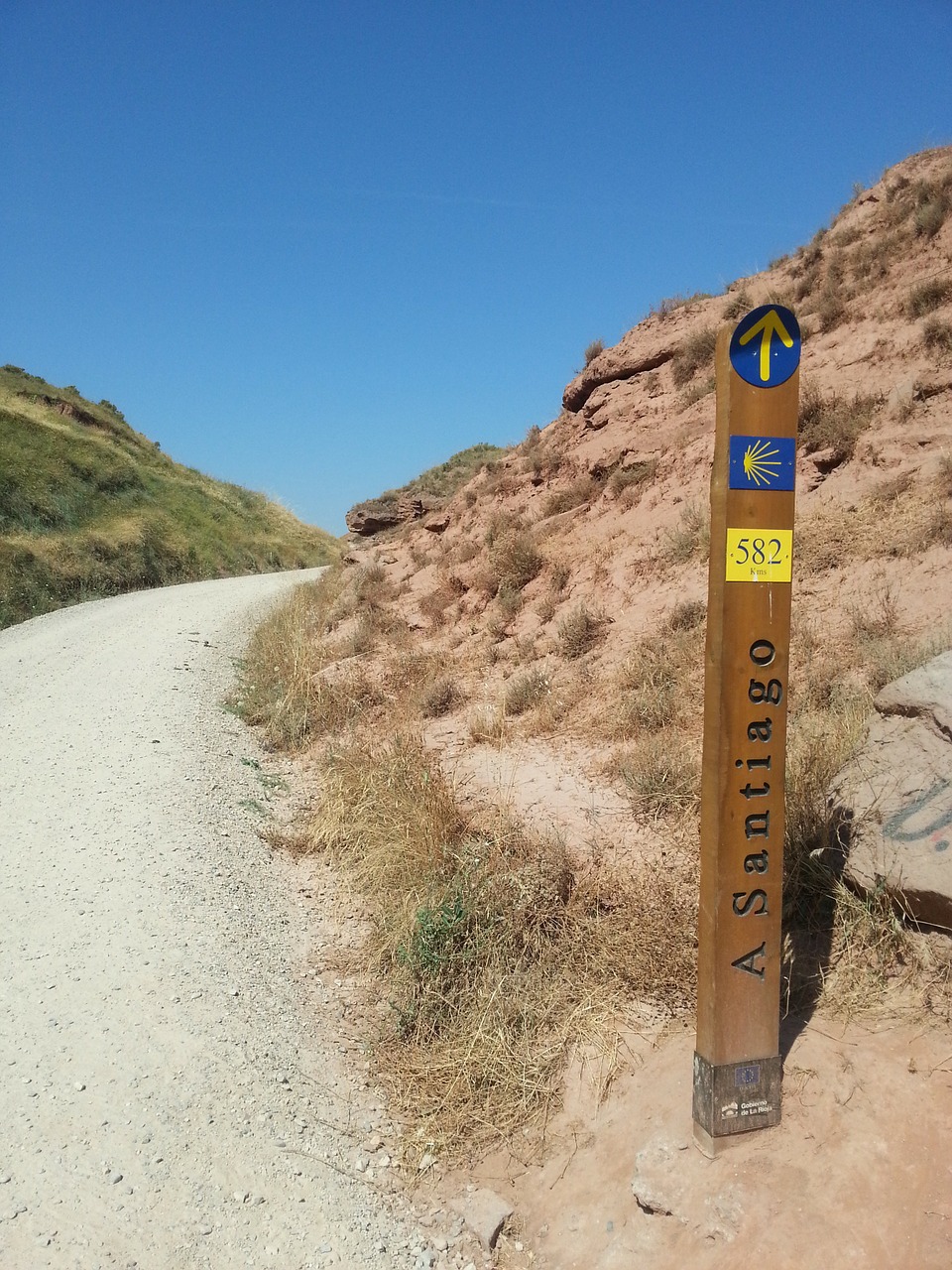
Once a pilgrimage made by Middle Age Catholics, the Camino de Santiago has become one of the most popular thru-hikes in recent memory.
Comprising seven main routes, this multi-week walk takes trekkers across Spain to the humble town of Santiago de Compostela.
What is the story behind this long hike? How should you prepare? Which route should you take? We’ll tackle the answers to all these questions below.
What is the Camino de Santiago?

The Camino de Santiago refers to a series of paths created by pilgrims in the Middle Ages. They led to a chapel that would later become the Santiago de Compostela Cathedral.
Upon arrival, they paid homage to St. James, a former apostle of Jesus Christ, who was executed by King Herod in 44 AD for his beliefs.
After the deed was done, his body was transported from Judea to Spain to be buried, as it was there where he had spread the Gospel in previous years.
His tomb drew visitors for several generations until harassment by the Roman Empire caused the site to be abandoned in the 3rd century.
It was forgotten about until 814 AD, when Pelagius the Hermit discovered its overgrown remains after mysterious lights led him to the site.
Theodomirus, the diocesan bishop in that region, considered it to be a miracle and immediately ordered the building of a chapel on the site of the tomb.
From that point forward, able-bodied Catholics began trekking to the chapel to pray to St. James. The walk’s popularity first peaked in the Middle Ages, later declining due to the occurrence of the Black Death, the rise of Protestantism, and other events.
By the 1980s, you could count the number of Santiago pilgrims doing the trek on both hands. However, with its naming as a European Cultural Route in 1987 and its recognition as a UNESCO World Heritage Site, the number of walkers began rising again.
Thanks to coverage by the internet, the Camino de Santiago is popular once more, as over 190,000 people walked its various routes to the Santiago de Compostela Cathedral in 2012.
Preparing for the walk

Walking the Camino de Santiago has become a popular rite of passage among travelers, but many take this hike too lightly. There are numerous portions along The Way that are a fair distance from civilization, so making diligent preparations is a must.
Carry supplies that will keep you dry, cool, and safe. A first aid kit is essential, a rain cover for your pack is highly advised, and you should carry sufficient water at all times. Also, make sure you don’t forget a quality sun screen!
You can get away with sandals or runners on many parts of The Way, but we advise taking hiking boots, as the hillier sections of the Pyrenees and the Original Way can be hard on your feet.
Beyond that, toiletries, a small amount of clothing (bring moisture-wicking garments for the hot days, and a sweater/jacket for the cold nights), and basic eating supplies (plate, bowl, cup, spork, knife) should be all that you’ll need.
What route should you take?

There is more than one path that comprises the Camino de Santiago. In all, there are seven main routes followed by a majority of trekkers, although any path over 62 miles long which leads to the Santiago de Compostela Cathedral is considered to be a route.
For simplicity’s sake, we’ll stick to the main paths, starting with…
The French Way
The French way Camino Francés is one of the most popular routes among Camino de Santiago walkers.
It takes you over the scenic French Pyrenees, it has the best developed infrastructure of all the routes, and it has had the most literature written about it over the ages.
Saint-Jean-Pied-de-Port is the most common starting point, although walkers with less time and stamina can begin at any other town along the route (provided you begin within 62 miles of Santiago) and still consider themselves a pilgrim.
Via de la Plata
Want to test your long-distance hiking abilities while getting to see large tracts of Spain? Taking on the Via de la Plata might be right up your alley.
Starting in Seville, it is not far from the Costa del Sol; use Car rental Marbella without intermediaries, and you’ll be able to start your trip after spending some time at the beach.
The long days you’ll put in hiking through the Spanish interior may have you pining for your sun lounger, but Roman ruins found along the way, mountain views, and picturesque countryside will do much to take your mind off the punishment being dealt to your body.
The Portuguese Way
As the name suggests, this path to Santiago takes you through the Portuguese countryside. Starting in Lisbon and heading north for 380 miles, it is flatter than the French route or the Via de la Plata, making it an easier path for those less enthused by the prospect of hill climbing.
However, those looking for dramatic scenery may be disappointed, especially when you consider that it runs parallel to motorways in several spots.
The Northern Way
This route takes walkers along the northern coast of Spain, making it a great choice for those who love ocean scenery.
Do note, however, it is a fairly long route at 510 miles, and some of the accommodations in towns may be more spartan than what can be found along the French Way.
For those who are experienced long-distance hikers, though, The Northern Way is a fine choice.
The English Way
Short on time? Take the English Way, which was the expedited path followed by British pilgrims, who landed in the Spanish ports of Ferrol or Coruna.
However, we must caution you against doing this path if you wish to receive the Compostela, as they are only given to pilgrims who do a trek that is at least 62 miles in length.
The English Way, as walked from the above mentioned starting points, averages around 46 miles long from each point.
The Original Way
Starting from Oveido, Spain, this route is often walked by French Way pilgrims who want to take in that city’s cathedral.
From there, it makes sense to follow the Camino Primitivo, or the first route taken by pilgrims to Santiago, as it is a more direct path.
The Original Way re-joins the French Way about 40 miles before the end, but in the meantime, you’ll be doing challenging hill treks.
While scenic, it is also subject to unpredictable weather, so be sure to double check that your gear is adequately waterproofed.
The Finisterre Way
Any trekker following the above routes can do the Finisterre Way if they are up to the challenge.
A trail that goes beyond Santiago for 40 additional miles, it takes you to a point of land considered to be the literal edge of the world in the Middle Ages.
In the present day, it is home to amazing coastal scenery, but do take a moment to stare out at the open Atlantic while putting yourself in the mind of someone who once thought a vast abyss of nothingness lay just beyond the horizon.
The Camino is calling you

Once a path walked by devout Catholics, the Camino de Santiago represents an opportunity to separate yourself from the maddening pace of today’s world.
By taking up this challenge, you’ll get to see what it means to live life slowly, which could change your life for the better.
